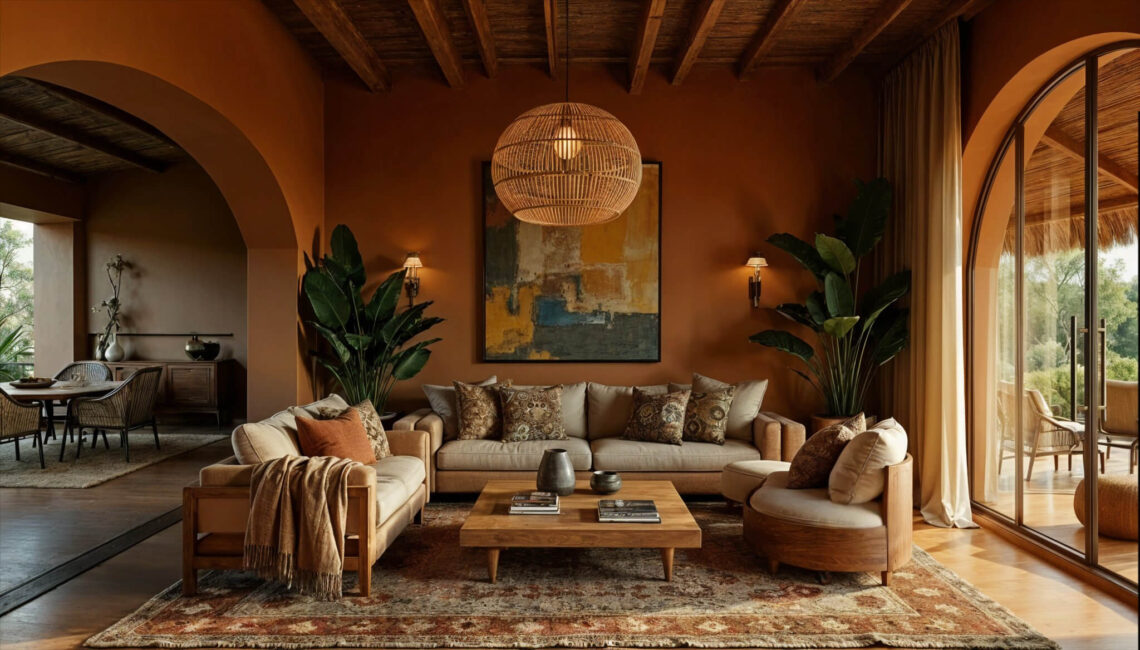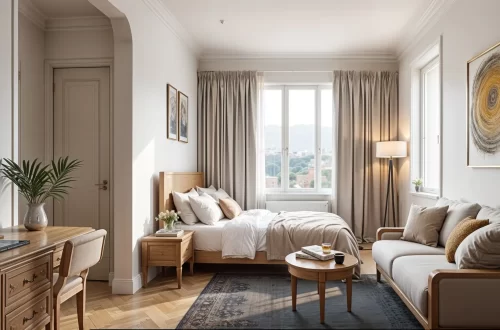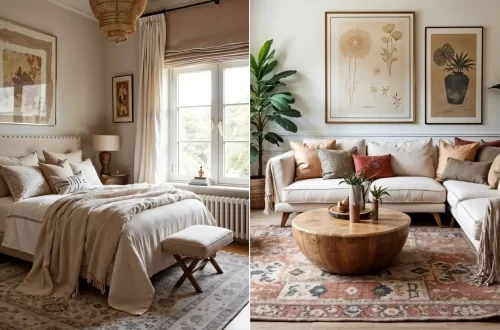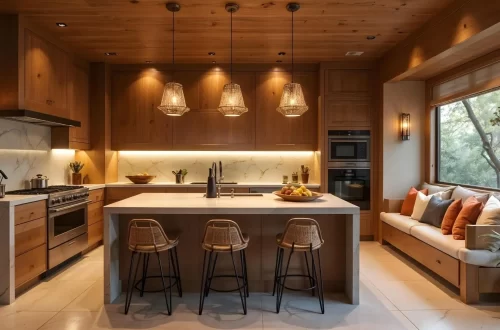Here’s something you might not know: Africa has 54 countries. That’s more than any other continent on Earth. And every single one is a mix of different cultures, different landscapes, different stories. So when we talk about an African-style home, we’re not talking about one look. We’re talking about hundreds of ways to turn a space into a stunning place of culture and meaning. But don’t worry, I’ve got you covered.
While there are countless variations, certain elements tie the continent together. And on top of that, each major region has its own distinctive flair. Let’s explore what makes African-style homes so special.
Jump to:
- What All African-Style Homes Share
- Creating a West African-Style Home
- Designing an East African-Style Home
- Styling a North African-Style Home
- Crafting a South African-Style Home
What All African-Style Homes Share
Before we dive into specific regions, let’s talk about the commonalities. These are the threads that run through most African interiors, no matter where you are.
Earthy Tones Are Everything
You’ve probably heard this before, but I’ll say it again anyway. Earthy tones are the backbone of African-style home design. We’re talking beiges, browns, ochres, and terracottas. These colors show up everywhere across the continent.
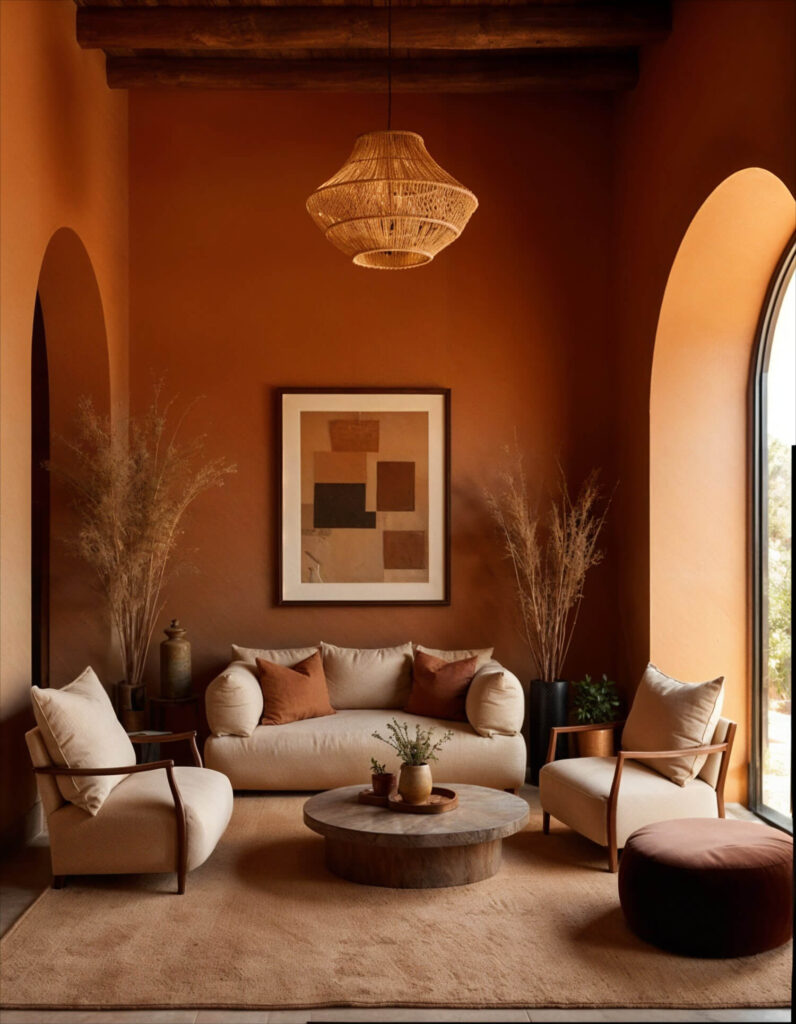
Why? African cultures have a deep spiritual connection to nature. The landscapes—from the Sahara’s golden dunes to the red soil of West Africa—naturally inspire these rich, warm tones. Think about the burnt sienna of Moroccan clay buildings, or the warm ochre of traditional homes in Mali. For locals, these materials are reflections of the land itself.
Wood Is Always the Main Character
Wood plays a starring role in African interiors. But here’s what’s different from Western design: you won’t often see solid hardwood floors. The humid climate in many regions isn’t ideal for them. Instead, you’ll find tiles or engineered wood underfoot.
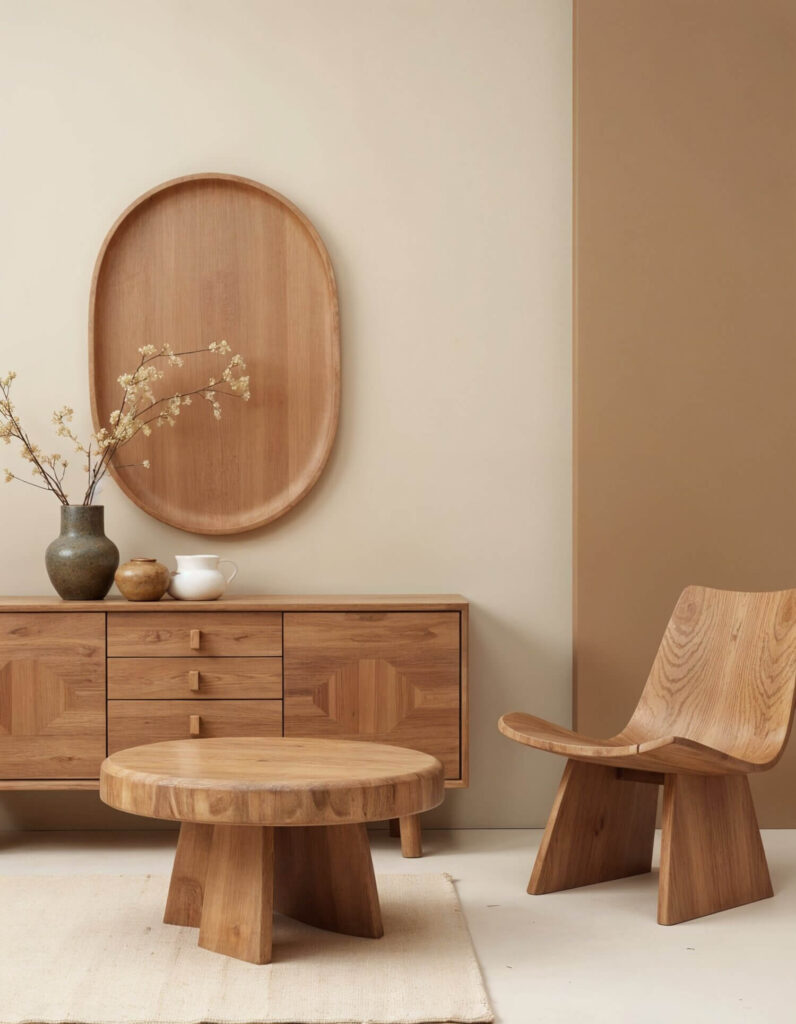
However, solid local woods dominate furniture, doors, and decorative pieces. We’re talking bowls, masks, carved panels—all the good stuff. These are usually medium-dark to dark woods, not the lighter tones you’d see in Scandinavian design.
Only certain Moroccan interiors might skip the wood and lean heavily on metalwork instead. But generally, wood is present and accounted for.
The Coastal Vibe Is Strong
Here’s a fun fact: 38 out of 54 African countries have coastlines. That’s more than two-thirds of the continent. So naturally, coastal aesthetics show up everywhere.
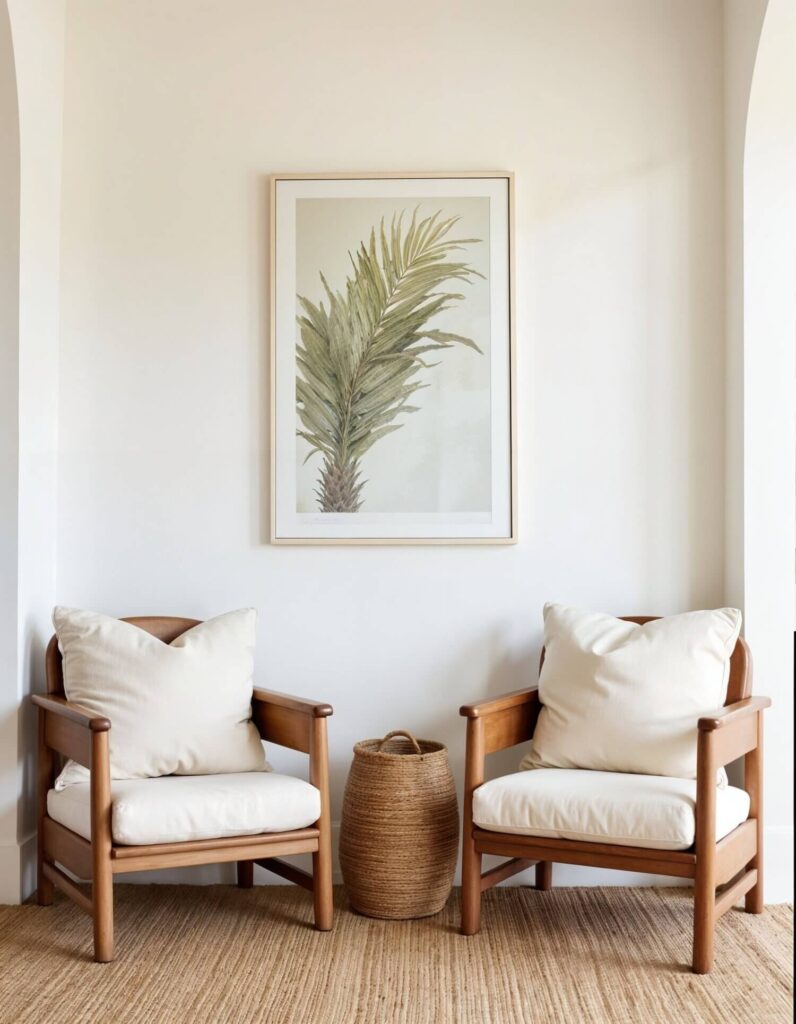
The coastal look in African-style homes typically includes:
- Soft white or light earthy walls
- Wooden furniture in natural finishes
- Cream-colored cushions and textiles
- Woven pendant lamps and baskets
- Peaceful artwork that reflects the local region
If you live somewhere with coastal vibes, this look will feel absolutely right. The key is personalizing it with decor and art from the continent to make it truly unique.
And speaking of unique, now that we’ve covered the shared pillars of African aethetics let’s get into regional specifics.
You May Also Like: The Ultimate Modern African Home design | 7 Elevated Ideas to Unleash Your Home’s Potential
Creating a West African-Style Home
I have to start with my region, my home, the place that holds my heart: West Africa. I’m a proud Senegalese, and honestly, I’m completely in love with everything about this region. The colors, the art, the warmth of the people—it’s an incredible place.
So yes, I’m biased. Extremely biased, actually. But I promise this bias comes from a genuine appreciation of the region. Let’s dive into what makes West African-style homes so distinctive.
Terracotta Everything
Terracotta is absolutely beloved in West Africa. The soil is rich with it, so the color feels like home. In my country, Senegal, terracotta walls are very common. But the love doesn’t stop at paint colors.
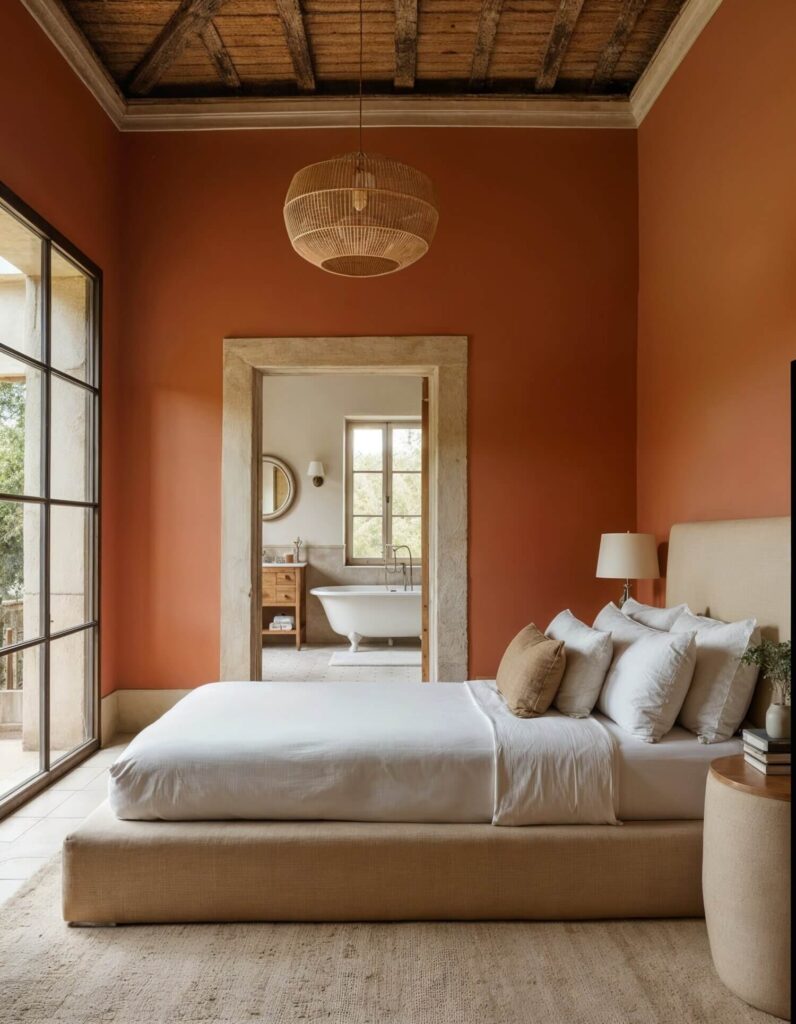
You’ll also find terracotta in decorative bowls, vases, and plant pots. The Nok culture in southern Nigeria even created famous terracotta sculptures that are now historical treasures. These pieces date back over 2,000 years and show just how long this material has been significant.
Adding terracotta materials or colors to your space instantly gives it that West African essence.
Vibrant Textiles Steal the Show
Let me tell you: West Africa is the absolute kingdom of vibrant textiles. No other region even comes close. We have print textiles like Ankara, dyed fabrics like Batik and Indigo, and handmade designs like Kente and Mud cloth.
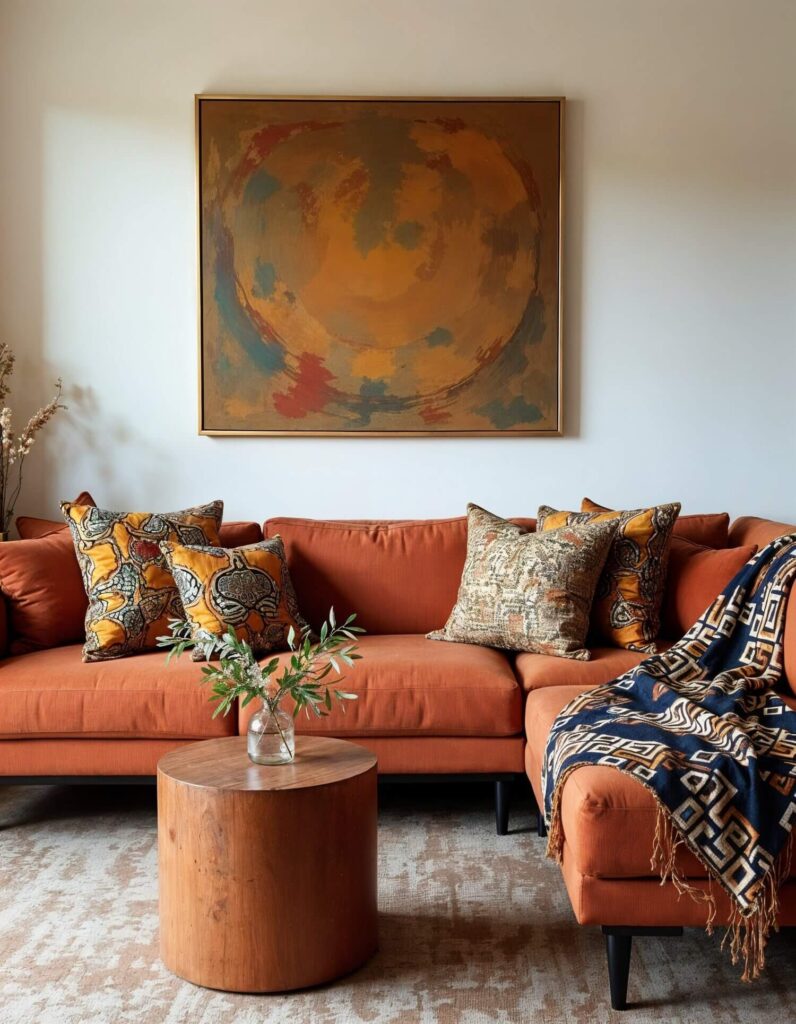
The variety is stunning. People wear these textiles and use them throughout their homes in creative ways.
Here are ideas to bring them into your African-style home:
- Upholster furniture like chairs, benches, and ottomans
- Use them on throw pillows or layer them as throw blankets
- Create runners for beds or tables
These textiles make an instant impact. They immediately give a room energy and personality.
Carved Wood Masks and Panels
West Africa is famous worldwide for its masks. Some of the most iconic masks on Earth come from this region. Think Baulé masks and Senufo masks from Ivory Coast. Or Dan masks from Liberia. Or those stunning Bwa Sun masks from Burkina Faso.
But these masks aren’t just decorative objects. They hold deep spiritual meaning in their cultures. So before you bring one home, take time to respectfully learn about the traditions and significance behind it. When you do this, the mask becomes a beautiful connection to culture, and a guardian for your space.
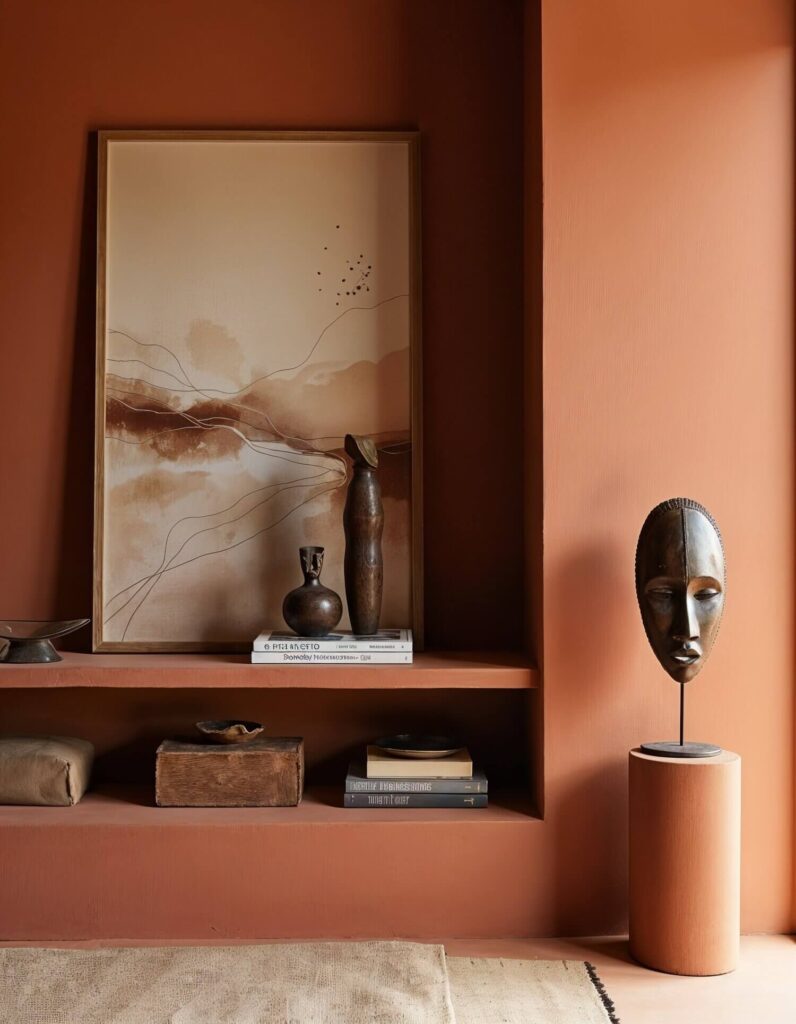
Beyond masks, carved panels are equally stunning. My personal favorites are Dogon doors from the Dogon people of Mali. These doors narrate legends and were traditionally made to protect homes. You can place them on a stand, display them on a console table, frame them, or even embed them into your own doors. They bring incredible soul to an African-style home.
To sum it up, terracotta, vibrant textiles, and carved masks and panels are three beautiful ways to bring West African details into your space. Now, let’s jump to the other side and see what’s happening in the East.
Designing an East African-Style Home
East Africa is breathtaking. The region is synonymous with coastal living, and wildlife which draws visitors to Kenya and Tanzania especially. It’s home to incredibly diverse and vibrant cultures. Plus, Ethiopia is considered the cradle of humanity, which makes the region historically profound.
Coastal Influence Runs Deep
Earlier, I mentioned how coastal aesthetics appear across African countries. But in East Africa, the coastal landscape has an especially powerful influence on home design.
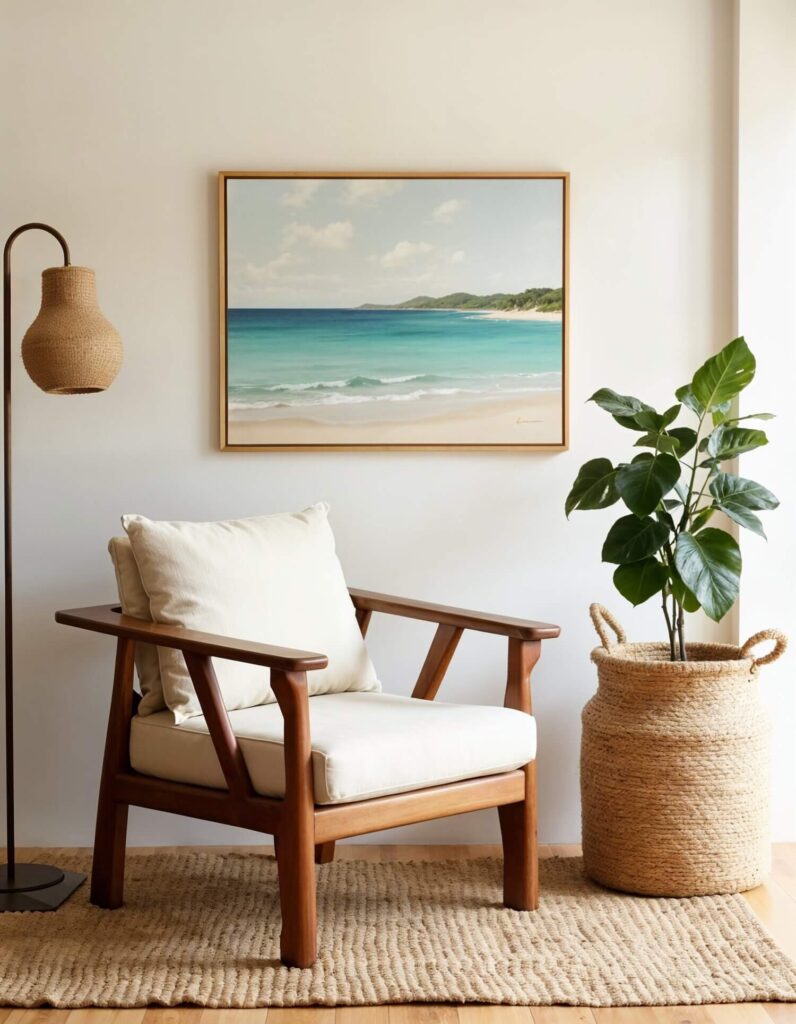
In this region, you’ll consistently find:
- Soft white walls that reflect natural light
- Cream cushions in living spaces
- Beautiful wood furniture and accents
- Woven items throughout the home
Sisal is particularly typical here. It’s used to make baskets, plant pot covers, and incredibly durable rugs. The coastal aesthetic in East Africa feels effortless and calming. If you’re leaning toward this style for your African-style home, it’s a wonderful direction to explore.
Dark Woods and Intricate Carvings
All African regions work with wood, but East Africa uses distinctive darker and reddish woods. These include African Blackwood, Mahogany, and Rosewood, which make the interiors quite unique.
The woodwork style itself is equally special. Furniture in this region features ornate carvings inspired by ancient Ethiopian designs. The craftsmanship is extraordinary.
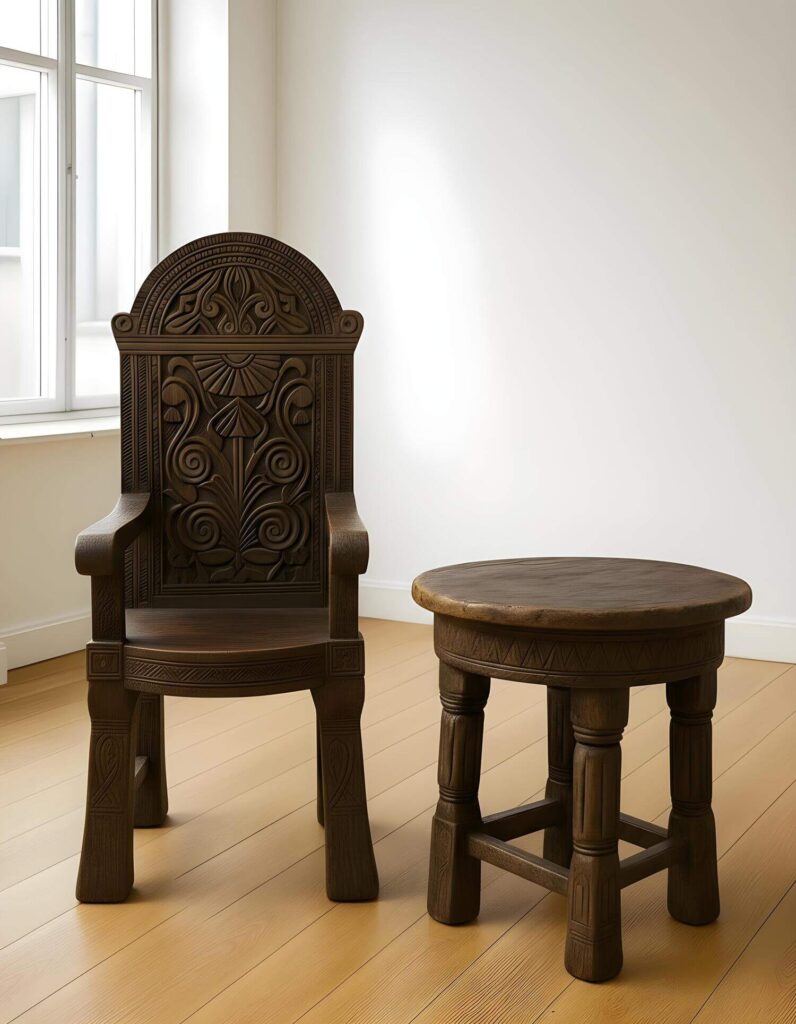
You’ll see:
- Sculpted table and chair legs with intricate details
- Chair backs with incredible geometric designs
- Complex motifs carved directly into tabletops
This type of craftsmanship is worth exploring deeply if you want an authentic East African look.
Handwoven Cotton Textiles
Ethiopia is especially known for its cotton production. So across the region, you’ll find lots of cotton textiles used on throws, runners, and pillow covers.
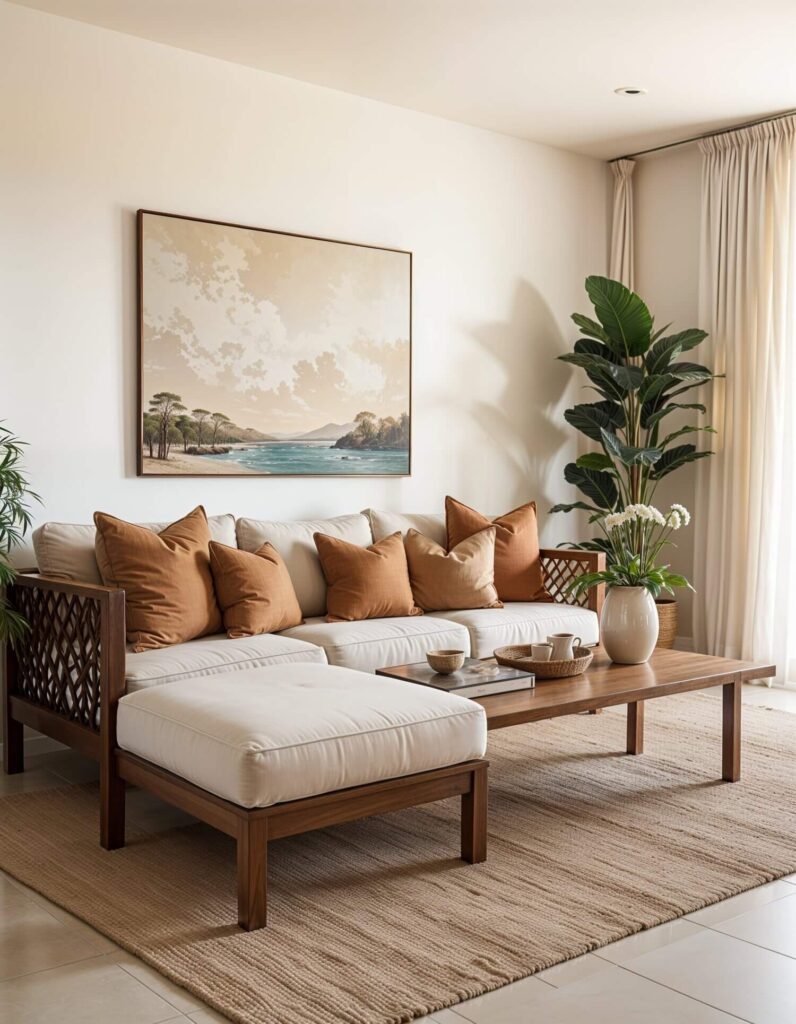
These items tend to be subtle and simple, whether they are neutral or colorful. They’re not heavily patterned like West African textiles. Instead, you’ll see checkered designs or solid colors.
For inspiration, check out brands like Bolé Road Textiles. They focus specifically on 100% handmade Ethiopian cotton items. It’s a great way to see how this craftsmanship translates into modern African-style homes.
Styling a North African-Style Home
North Africa is renowned for its metalwork, tilework, and absolutely stunning architecture. If you’re interested in interiors, you need to visit this region. The palaces, riads, and coastal homes are breathtaking. Seriously breathtaking.
Let’s explore what makes North African-style homes so distinctive.
Architecture & Decor Get Ornate
Before we even talk about interiors, we need to discuss the architecture itself. North Africa has some of the most stunning ornate architecture on the entire continent.
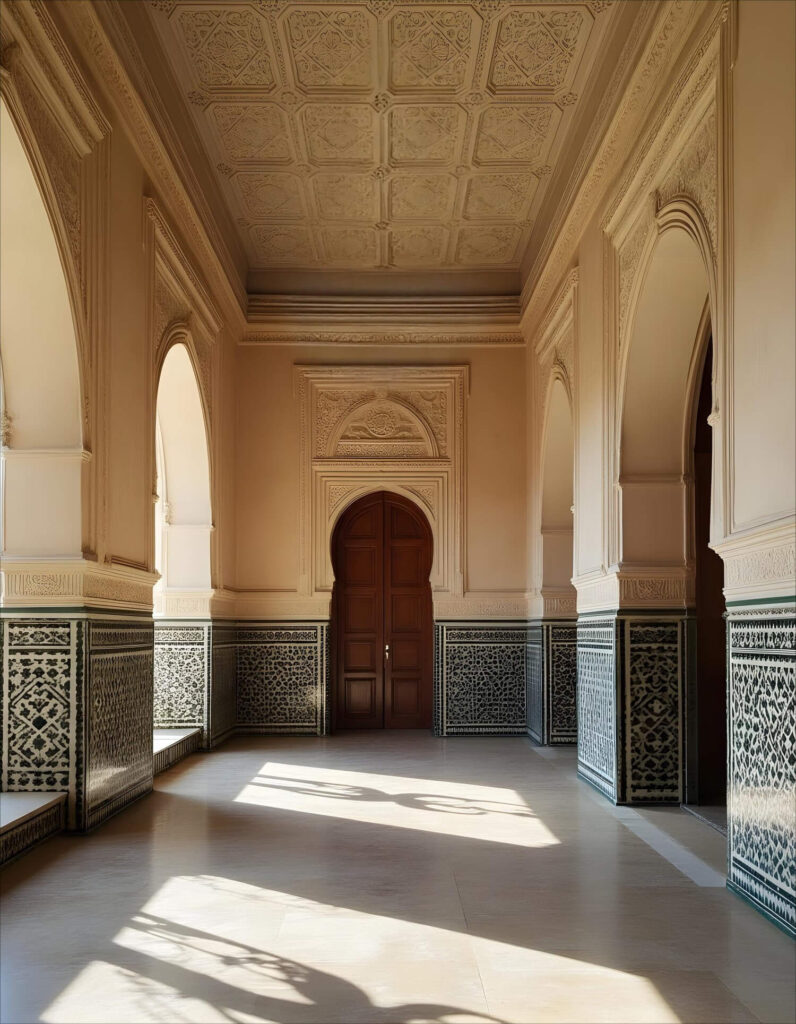
This includes beautiful arches, tall ceilings, and walls with incredibly intricate details. The Arabic influence is strong here, and those patterns repeat throughout tiles, textiles, and rugs.
If you love the North African look, remember that ornate is the way to go. Don’t hold back.
Tilework Reaches Masterful Heights
North Africa is famous worldwide for its tile work. We’re talking tiles with gorgeous motifs and colorful mosaics created with extreme precision. And then there are those absolutely stunning glazed zellige tiles.
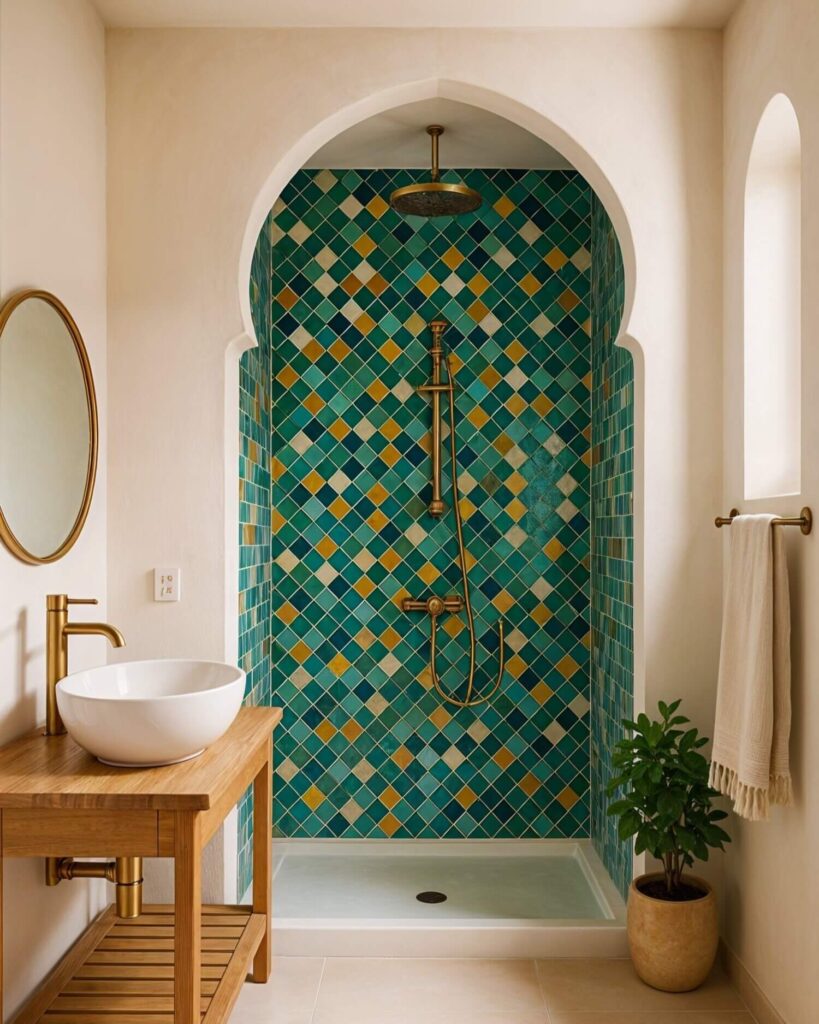
Zellige tiles create beautiful floors, fountains or glazed walls in mosaics or deep, solid colors like rich greens or deep burgundies. The effect is jaw-dropping. You’ll see this type of tilework in palaces across the region. But Moroccan riads are especially famous for it, particularly in Marrakech.
You’ll also spot beautiful tilework in hotel bathrooms, cafes, and restaurants. Hand-painted cement tiles are particularly popular. Basically, anywhere you go in North Africa, tilework is essential to the aesthetic.
You May Also Like: Moroccan Tiles for Bathroom: A Stunning World of Style
Metalwork Brings Opulence
North Africa is one of the regions where metalwork craft is most present and celebrated globally. The brass work here is absolutely stunning. It makes homes feel even more ornate and luxurious.
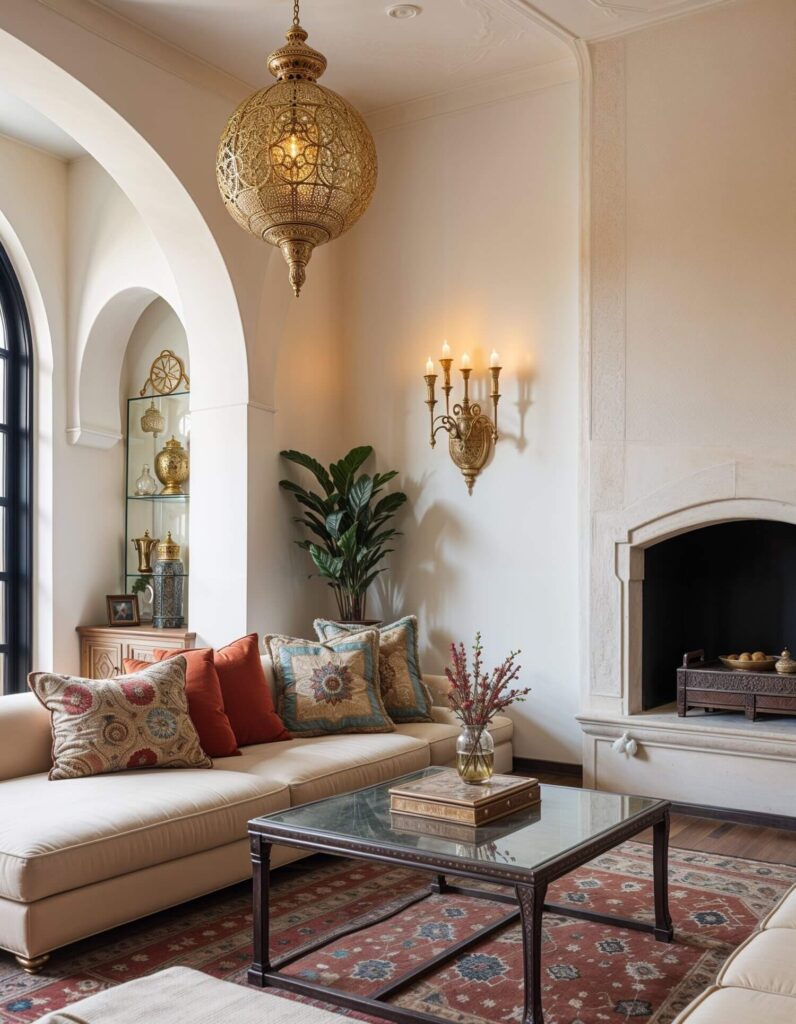
You probably know those distinctive Moroccan lamps and lighting fixtures. They’re crafted with incredible skill and often made from golden brass. This gives homes a palace-like feel that’s hard to replicate elsewhere.
Beyond lighting (which is definitely where metalwork shines brightest), you’ll find stunning metalwork on doors, furniture frames, and tables. If you’re after that opulent look for your African-style home, North African metalwork is a must-explore.
Crafting a South African-Style Home
Last but absolutely not least: Southern African style. This region includes South Africa and neighboring countries that are home to breathtaking landscapes and beautiful craftsmanship traditions. These are very specific to the area and worth exploring deeply.
Wall Baskets Make a Statement
All African regions have basketry traditions, but Southern Africa stands out for its coil baskets. The area around Zambia and Zimbabwe is particularly well-known.
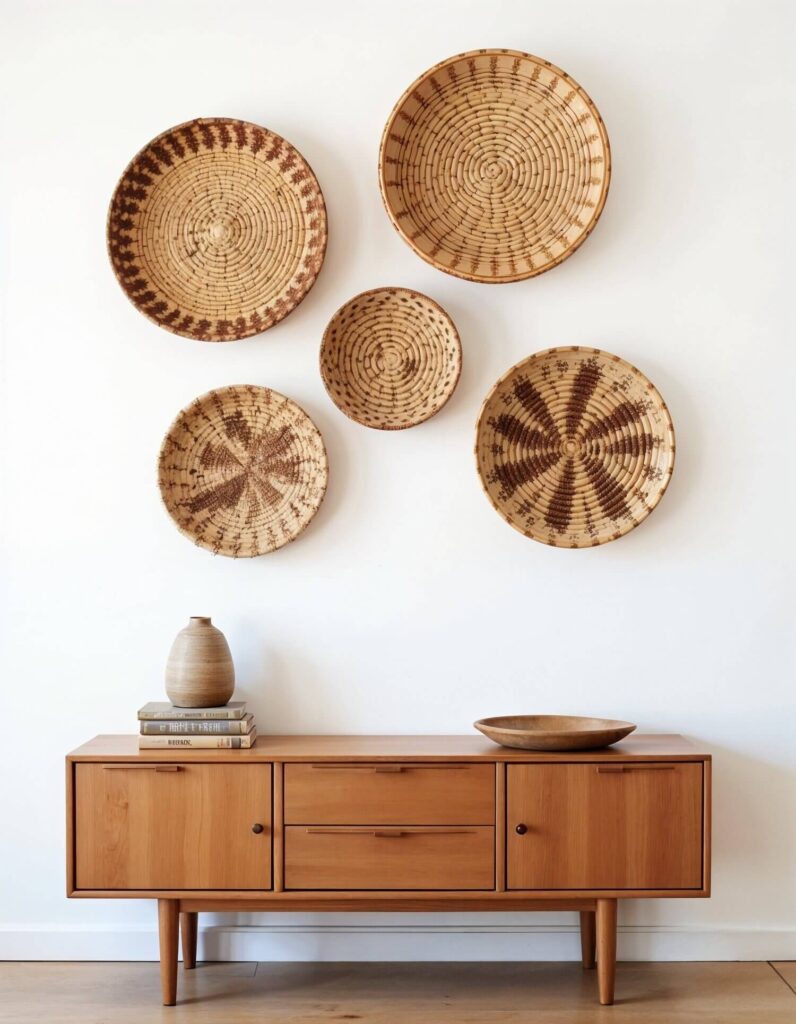
Tonga Baskets from Zambia
- Made by the Tonga people in Southern Province
- Crafted from ilala palm leaves and natural dyes
- Famous for clean, striking designs that work beautifully on walls
- Popular in modern interiors worldwide
Binga Baskets from Zimbabwe
- Come from Binga district, home of the BaTonga people
- Also made from ilala palm with natural dyes from tree bark and roots
- Known for tight weaves and symmetrical patterns
- Among the most collected African wall baskets globally
Walls adorned with these stunning baskets are a staple in Southern African-style homes.
You May Also Like: The 11 Top Brands for Stunning African Wall Baskets
Animal-Inspired Accents
South Africa specifically draws heavily from its wildlife and safari heritage. The region loves working with leathers and animal-inspired prints and accents.
You’ll see this aesthetic on cushions, accent rugs, and decorative details like horns placed on stands or above door frames. Now, I’m an animal lover, so I only recommend faux materials. Thankfully, there are excellent vegan options that replicate the look perfectly.
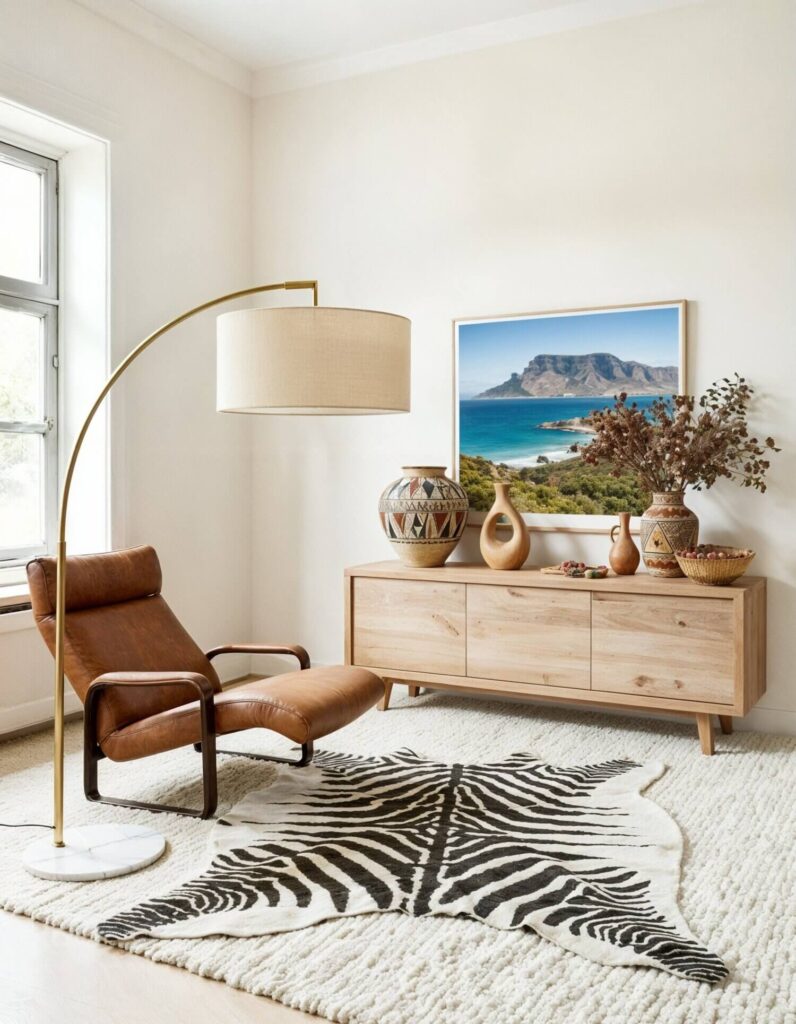
Picture this: a vegan leather armchair, a faux zebra hide on the floor, and a console table with striking nature-inspired decor. It’s absolutely gorgeous. This is definitely an avenue worth exploring for your African-style home.
Beadwork Tells Cultural Stories
South Africa is famous for its beadwork traditions. Communities like the Xhosa, Zulu, and Ndebele historically used beads to signify different social markers. Each color and beading style carried specific meaning.
This beadwork is typically colorful and vibrant. You can hang pieces on stands or frame them to display beautifully throughout your space. If you do this, I highly encourage you to learn about the meaning behind each item. It adds so much depth to your African-style home.
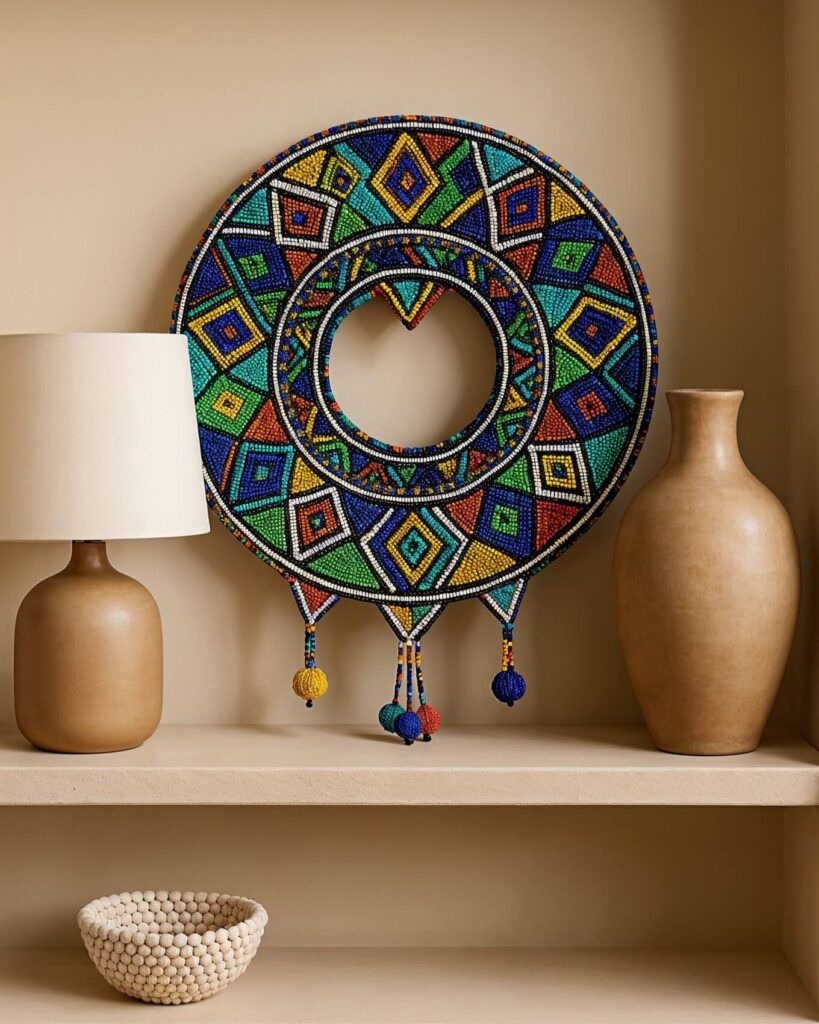
There are also modern interpretations worth checking out. Klaylife, for example, creates stunning chandeliers made from clay beads in neutral tones hung on strings. The craftsmanship is incredibly creative and contemporary.
Beadwork is truly special in Southern Africa. If you’re drawn to this look, I would jump head-first.
Your African-Style Home Awaits
There you have it: a complete guide to African-style homes across four major regions. Remember that Africa is vast and diverse. There’s no single “right” way to create an African-style home.
The key is choosing elements that you love and approach with respect and curiosity. Learn about the craftsmanship and cultural significance behind the pieces you bring home. When you do that, your African-style home becomes a special, meaningful place.
Continue your journey: 7 Exciting African Interior Design Styles for Your Next Makeover

